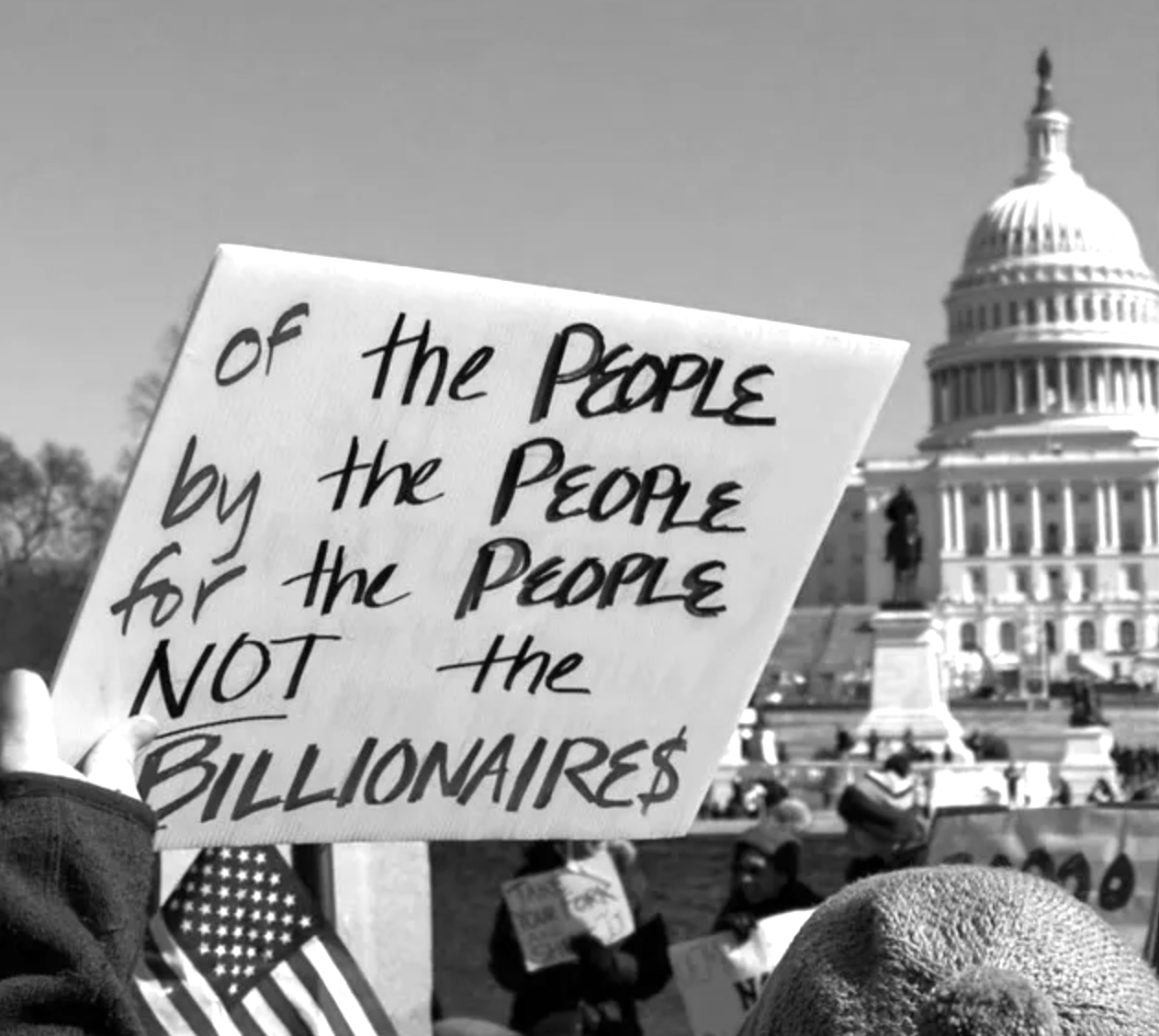
The Resistance Will Not Be Televised
FAIR
04/04/2025
“Resistance is alive and well in the United States.”
So declared the headline of a March 19 article on the nonprofit news site Waging Nonviolence. Authors Erica Chenoweth, Jeremy Pressman and Soha Hammam, political scientists at Harvard’s Crowd Counting Consortium, outlined how—despite a common belief that grassroots public resistance against the depredations of the Trump Administration is lacking or lukewarm—protests are actually rising dramatically.
These demonstrations, the piece said, “may not look like the mass marches of 2017, but research shows they are far more numerous and frequent—while also shifting to more powerful forms of resistance.”
They note that while the reconfigured Peoples’ March of 2025—held on January 18—saw lower turnout than the 2017 Women’s March, that date also saw the most protests in a single day for over a year. And since January 22, we’ve seen more than twice as many street protests than took place during the same period eight years ago.
The Crowd Counting Consortium, founded in 2017 to collect “publicly available data on political crowds reported in the United States,” tracked more than 2,000 protests in February alone.
The acts of collective resistance documented by the CCC—as well as by other activism-tracking initiatives, such the “We the People Dissent” Substack—span every state. They focus on advocacy for diverse constituencies and issues under attack from the current administration, including public education, Medicaid and reproductive, immigrant, Palestinian, labor and LGBTQ rights.
Their common thread is opposition to Trump’s fascistic ideology and rapid rash of likely unconstitutional executive orders, such as freezing federal budget outlays approved by Congress, the mass firing of government workers and the dismantling of institutions by the “Department” of Government Efficiency by unelected “adviser” Elon Musk.
But if you relied on articles and broadcasts from the legacy national news media during early 2025, you wouldn’t know the extent of grassroots action prompted by this discontent. A FAIR examination of five major outlets found that coverage of anti-Trump/pro-democracy protests roughly overlapping CCC’s study timeframe (January 22 to February 26) was minimal, and downplayed the significance of this opposition, especially around the inauguration.
Mostly tepid coverage
FAIR examined reporting on three organized protest events occurring concurrently in Washington, DC, and across the US: The People’s March (January 18), the “50501” demonstrations in all state capitals (February 5) and the Presidents Day protests, sometimes dubbed “No Kings Day” (February 17). Using the Nexis news database and the outlets’ websites, we looked at the New York Times, Washington Post and USA Today, and at ABC World News Tonight, Good Morning America, CBS Evening News and CBS Mornings—the top morning and evening national news programs on ABC and CBS—within four days of each of these dates. (NBC was not included in the study because its transcripts are no longer available on Nexis.)
Broadcast coverage was abysmal. None of the four network shows in our study ran any reports focused on any of the three protest events. ABC World News Tonight mentioned none of the events, and GMA referred to only one of them in passing. In their coverage of the January 18 protests, CBS Evening News and Mornings gave more coverage to speculation about violent protest than they did to actual (nonviolent) protest.
The newspapers had more coverage, but their stories tended to be relatively short, buried deep in the paper, or in the form of wire-service reprints. Longer pieces often downplayed the protests’ size and disparaged their significance. The Times and Post tended to focus on DC-based protests, whereas USA Today offered more thorough and accurate articles about the growing nationwide resistance movement.